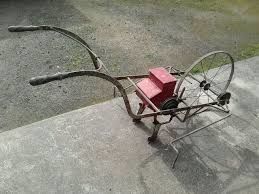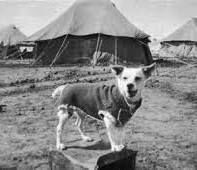Stories from the past.
This page has been created to showcase some of the stories of Bellarine History.
Working for Drysdale and Newcombe
The stories of Anne Drysdale and Caroline Newcomb, business partners in the squatter’s run, Boronggoop south of Geelong, and the freehold properties, Coriyule and Garrangill, near Drysdale are now embedded into the history of the Bellarine. Less well known are the stories of those, both men and women, who worked on these properties. The Bellarine Historical Society has developed a research project to discover the lives of these working people, covering their origins, their roles while working for Drysdale and Newcomb, and their lives after they left to forge their own fortunes. The first of these stories are now available and more will be added as they are completed.
Please click here for Introduction.
Click here to read about Mr and Mrs Clark
Click here to read about John and Vair Armstrong and Family
Click here for John Henderson's story
Click here for the Gange Family story
Click here for Biddy Trainer and Family.
Click here to read about Suzannah Johnstone
Click here to read about Maryanne & Kitty Scott
Click here for Edmund Steel In 1843 Drysdale and Newcomb purchased the licence of 'Steel's Station' which they called Coriyule. They employed the previous licencee, Edmund Steel, to manage the property for them for the next year. Read his story here, used by permission from its' author, David Hutchinson.
Bush Nursing
The Drysdale and District Bush Nursing Association which became Drysdale Community Health and eventually Bellarine Community Health.
Bush Nursing in Victoria was commenced after the arrival of Lord Dudley and his wife to Victoria in 1908, where he was Governor for many years. Lady Dudley was very interested in the hospitals but realised that in the country areas there were no services available to the people for midwifery, accidents etc., as the distance to travel to the nearest hospital was usually many miles by horse and jinker.
Click here to read more
Sea Bathing Company baths, Portarlington, 1888
A public bathing house existed prior to 1868 and was located at the base of the cliffs directly in front of historic ‘Laura Villa‘. The ‘Portarlington Sea Bathing Company Limited’ was formed in June 1878 and the rebuilding of the Bathing-House was put to tender, and awarded to architect Leonard Terry and builders Trevena & Gubby. Only ten years later, on the 5th January 1888,the Portarlington Sea Bathing Company was wound up. A public bathing house existed prior to 1868 and was located at the base of the cliffs directly in front of historic ‘Laura Villa‘. The ‘Portarlington Sea Bathing Company Limited’ was formed in June 1878 and the rebuilding of the Bathing-House was put to tender, and awarded to architect Leonard Terry and builders Trevena & Gubby. Only ten years later, on the 5th January 1888,the Portarlington Sea Bathing Company was wound up.
Onion & Shallot growing on the Bellarine
It was claimed that Jonas Levien and James Walker were the first to grow onions at Drysdale, Levien having taken up land there in 1865.
In the 1870s Samuel Hibbert & Frederick Willey pioneered the onion growing industry on the Bellarine Peninsula. In order to test the suitability if the soil they imported a small quantity of Brown Spanish seed direct from Spain. It was the first acre of commercially grown onions and was situated on the corner of Church & Portarlington Roads. Their drays would take the produce over the paddocks to the Portarlington Pier. The return trip would carry loads of shell grit, a slow release fertiliser for the onions. Shell grit can still be found in the paddocks today.[1] Click bellow to view full article
[1] Bob Willey, Drysdale family descendant, 2010
Horrie the Wog Dog.

There is a small connection to Portarlington; Henry Osland Moody was employed by Howard Smith and Sons. Among other things he managed the bay steamers, and had an office on the pier. James was his son. Click here to view the full article Horrie the Wog Dog
Aboriginal History on the Bellarine
The lifestyle of the local indigenous people was considered to be luxurious compared with other places in Australia due to the abundance of seafood and game. Tree dwelling animals such as possums were plentiful in the red gums that covered the peninsula. Eels were trapped in the water that flowed into the bay. Click here to read more
A time to remember" Drysdale's Private. Cecil Lyons
Cecil Lyons was only 18 years old when he enlisted in The Australian Infantry, February 16, 1916. He was one of eight children born to James Lyons and Elizabeth Ann (nee Reynolds), Drysdale. He attended Drysdale State School and Drysdale Methodist Church.
Private Lyons embarked on the HMAT ‘Ajana’ with the 58th Infantry Battalion filled with pride and ready to serve his King and Country.
The 58th Battalion fought on many battlefields in France. They battled the German soldiers on The Somme and survived the winter in endless mud in The Flanders. Cecil wrote many letters to his family back home, some were from the battlefields. His last letter was addressed to his sister May, dated 21st April 1918.
The last part of the letter reads,
“Well May we cannot grumble about our Easter dinner as luck was in and although we were in the line we reckoned it was a good war for a few days. I hope you don’t think it was the Australians who let the Hun through over here. We fight while we have a fighting chance and I think the old chap is the sorriest man when he does meet us, there is only one fault with there is only a handful of us and of course you can guess what will happen in time.”